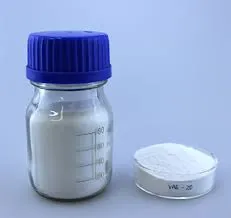
Nov . 21, 2024 22:19 Back to list
hec hydroxyethyl cellulose
Understanding Hydroxyethyl Cellulose (HEC) Properties, Applications, and Benefits
Hydroxyethyl cellulose (HEC) is a non-ionic, water-soluble polymer derived from cellulose, a natural polymer found in the cell walls of plants. HEC is produced through the chemical modification of cellulose by the substitution of hydroxyethyl groups. This modification endows HEC with unique properties that make it valuable in various industries, including pharmaceuticals, cosmetics, construction, and food.
Understanding Hydroxyethyl Cellulose (HEC) Properties, Applications, and Benefits
In the pharmaceutical industry, HEC serves as a thickening agent, binder, and stabilizer in various formulations. It's often used in gels, ointments, and creams, where it not only improves texture but also enhances the delivery of active ingredients. Its biocompatibility and non-toxicity further make it an ideal choice for topical applications. Furthermore, HEC can also be used in controlled-release drug formulations, where it helps regulate the release of drugs into the body, improving therapeutic efficacy.
hec hydroxyethyl cellulose

In the field of cosmetics, HEC is employed as a thickener and moisturizer in lotions, shampoos, and conditioners. Its ability to retain moisture makes it a popular ingredient in products aimed at hydrating and softening the skin and hair. The film-forming properties of HEC also contribute to the long-lasting effects of cosmetic products, making them more effective in providing a smooth and protective layer over the skin or hair.
The construction industry has also embraced HEC for its ability to enhance the performance of construction materials. HEC is commonly used in wall paints, adhesives, and cement-based products. It improves the workability of these materials, allowing for smoother application and better adhesion to surfaces. Moreover, HEC helps prevent sagging and enhances the water retention of mortars, promoting better curing and strength.
In the food industry, HEC is used as a thickening and stabilizing agent in a variety of products, from sauces to salad dressings. Its ability to create stable emulsions and maintain texture makes it a valuable ingredient in processed foods.
In conclusion, hydroxyethyl cellulose (HEC) is a multifaceted polymer that plays a crucial role in various sectors due to its favorable properties. Its applications range from pharmaceuticals to construction, highlighting its versatility and effectiveness. As industries continue to innovate and seek sustainable solutions, the demand for HEC is expected to grow, paving the way for new formulations and improvements across multiple markets. Its safety and efficacy make HEC an essential ingredient, contributing significantly to product performance and consumer satisfaction.
-
Versatile Hpmc Uses in Different Industries
NewsJun.19,2025
-
Redispersible Powder's Role in Enhancing Durability of Construction Products
NewsJun.19,2025
-
Hydroxyethyl Cellulose Applications Driving Green Industrial Processes
NewsJun.19,2025
-
Exploring Different Redispersible Polymer Powder
NewsJun.19,2025
-
Choosing the Right Mortar Bonding Agent
NewsJun.19,2025
-
Applications and Significance of China Hpmc in Modern Industries
NewsJun.19,2025







